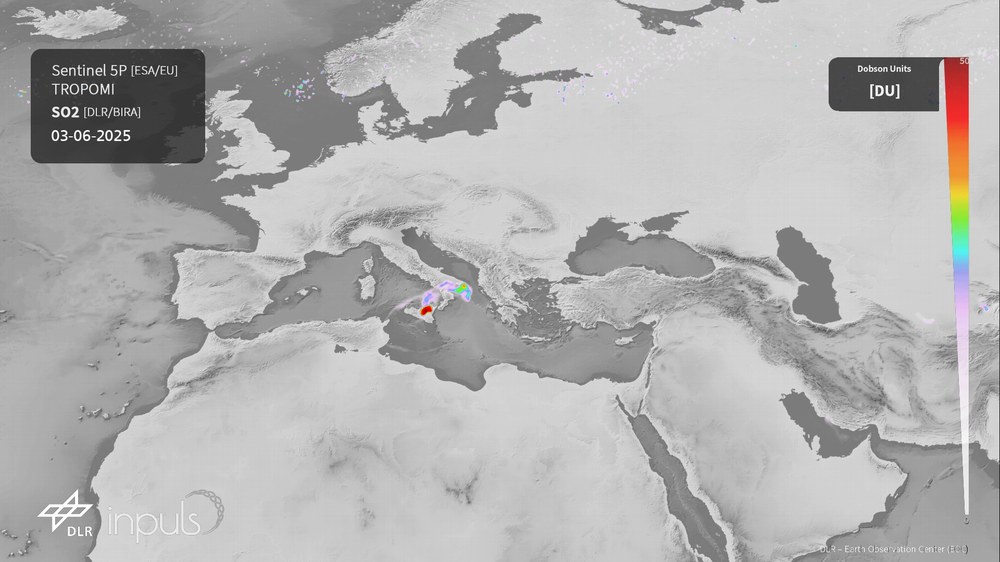S5P measures SO2 cloud over Sicily
On Monday, June 2nd, at around 11:00 a.m. local time, Mount Etna in Sicily erupted with a massive explosion. Shortly after the eruption, the European satellite Sentinel-5 Precursor (S5P) detected the volcanic sulfur dioxide (SO₂) cloud over Sicily for the first time. Since then, operationally processed S5P measurements at the Earth Observation Center (EOC) have continuously recorded the development of the volcanic emissions.

Volcanic eruption Etna, Italy
Your consent to the storage of data ('cookies') is required for the playback of this video on Quickchannel.com. You can view and change your current data storage settings at any time under privacy.
Although Etna is one of the most active volcanoes in the world and is almost constantly active, the eruption on June 2nd was stronger than expected and took both visitors and local authorities by surprise. It was the 14th eruption since mid-March 2025. Fortunately, there were no injuries or fatalities, as the eruption was limited to the upper slopes of the Southeast Crater, and tourists were quickly evacuated from the area. The pyroclastic flow traveled approximately 2 km into the Valle del Leone, which acts as a natural containment basin.
During the eruption, large amounts of ash, smoke, and gases were ejected into the atmosphere, reaching altitudes of over 3 km above the volcano. At 13:04 local time, the TROPOMI sensor onboard S5P provided the first measurements of the SO₂ cloud over the island, which have been continuously analyzed since then. The animation illustrates the dispersion of the SO₂ cloud in the days following the eruption, as measured by TROPOMI. The UVN spectrometer has a spatial resolution of 3.5 × 5.5 kilometers and provides daily global measurements of trace gases in the atmosphere, including SO₂, ozone, and nitrogen dioxide.
Approximately 5,000 tons of SO₂ were released during the eruption. The altitude of the SO₂ cloud was also determined using a scientific algorithm based on machine learning. The development of high-quality products and the visualization of sulfur dioxide emissions are part of the DLR project "INPULS."
SO₂ is a naturally occurring trace gas in the Earth’s atmosphere. The largest source of atmospheric SO₂ is the combustion of fossil fuels in power plants and other industrial facilities. Additionally, SO₂ is released by volcanoes into the lower troposphere (via passive degassing) and into the stratosphere (through explosive eruptions).
This corrosive gas poses a threat not only to the environment and populations near volcanoes but also to the occupants of aircraft if it infiltrates the cabin. It can also damage aircraft engines. The timely detection of SO₂ helps mitigate these risks and indicates areas where hazardous concentrations of gas and ash are to be expected.
Links
Contact
Dr. Diego Loyola
